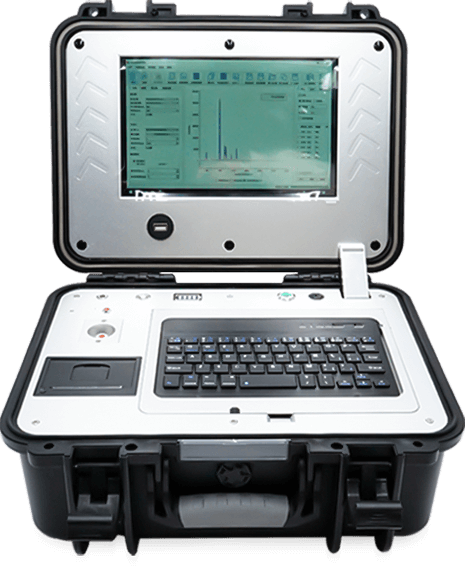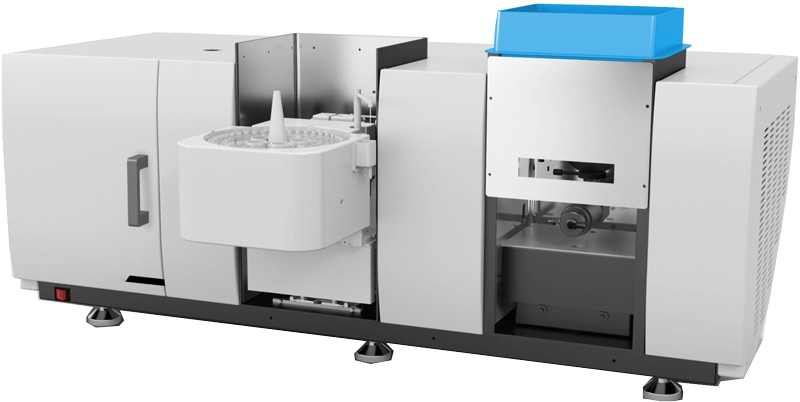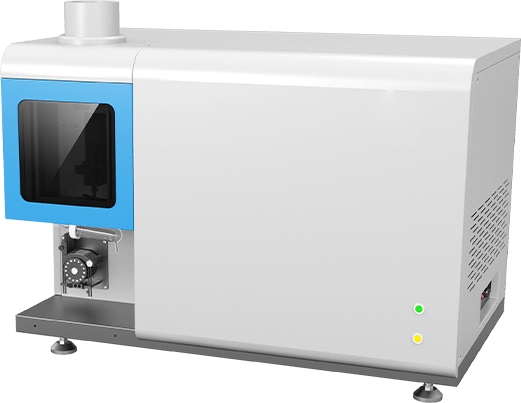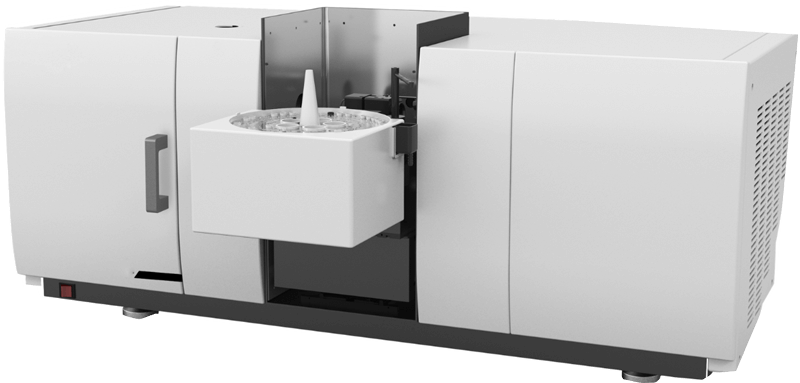
Inductively Coupled Plasma Emission Spectrometer
- Product Number:LD-ICP1
- Product Difference:5–10 elements/min for trace element composition analysis, testing over 70 elements
Product Introduction
The Inductively Coupled Plasma Emission Spectrometer (ICP-OES), as a professional laboratory analytical instrument, represents a new generation of products developed by LYND Technology Co., Ltd. It features comprehensive element testing capabilities—capable of analyzing over 70 elements—along with rapid testing speeds and low detection limits. Primary applications span rare earth industries, silicon industries, petrochemicals, ore analysis, metal smelting, geological research, pharmaceutical safety, experimental studies, and environmental monitoring.
This ICP-OES instrument employs a high-sensitivity photomultiplier tube as its detector for trace element analysis, capable of testing nearly 70 elements. It incorporates a solid-state RF generator and automatic tuning and matching technology. The system includes a dedicated circulating cooling water system, argon gas conduit, cooling water lines, and a high-sensitivity sample introduction system (high-efficiency nebulizer with dual-tube nebulizer chamber).
The ICP-OES is primarily applied in the rare earth industry, silicon industry, petrochemicals, ore analysis, metal smelting, geological research, pharmaceutical safety, experimental research, environmental monitoring, and other fields.
Product Features
Safe and Reliable Solid-State RF Power Supply
The instrument employs an RF power supply characterized by compact size, high output efficiency, and stable power delivery. It incorporates comprehensive safety protections including water circuit, gas circuit, and overload safeguards, significantly enhancing operational safety and reducing failure rates.High-Precision Gas Flow Control System
All plasma gas, auxiliary gas, and carrier gas during operation are controlled by high-precision mass flow controllers (MFCs). These controllers enable continuous flow adjustment and deliver highly accurate gas output, ensuring the precision of test data.High Automation Level
The instrument features a high degree of automation, with all operations except power switching performed by software. The intelligent software provides real-time feedback and prompts for each operation.Peristaltic Pump Injection System
The instrument features a high-precision peristaltic pump with five channels and sixteen rollers, ensuring injection accuracy while preventing liquid accumulation. The pump's speed is continuously adjustable to meet diverse testing requirements.Fully Automated Ignition and Matching Technology
The software enables fully automated one-click ignition, with all parameter adjustments performed automatically. Combined with advanced automatic matching technology, it achieves high ignition success rates and simplified operation.Intelligent Flame Monitoring Function
The instrument features a highly sensitive fiber-optic sensor that continuously monitors flame status during operation. In case of abnormal flame extinction, the instrument automatically shuts down.Ultra-high resolution optical system
The instrument features an imported 4320-line grating with ultra-high resolution. Combined with proprietary optical path adjustment technology, it reduces resolution from the typical 0.008nm to under 0.005nm. This exceptional resolution ensures no interference between tested elements.Highly sensitive detector
The instrument is equipped with a high-sensitivity imported photomultiplier tube (PMT) as the detector. It automatically sets optimal testing parameters for different target elements to achieve the best detection state and deliver the most accurate test results. No cooling or purging is required, and it features a long service life.High-Precision Temperature Control System
The entire optical path is protected by a precision temperature control system. Temperature settings can be adjusted in real-time based on the actual ambient conditions in the customer's laboratory, eliminating the need for continuous operation. Temperature control accuracy is ≤±0.1℃. This precise temperature control system ensures optical path stability, resulting in more reliable test data.Ultra-low operating costs
When inactive, the instrument shuts off its power supply, cooling water tank, and gas supply, incurring no operational expenses. It is ready for immediate use upon activation, eliminating prolonged optical path warm-up. It requires only 99.99% purity argon gas, not the 99.999% ultra-high purity grade, reducing costs by at least one-third.Automatic Observation Position Adjustment
The instrument employs a two-dimensional moving platform design, enabling real-time software adjustment of the torch tube's position. By analyzing feedback signal values, it locates the optimal observation position to achieve maximum sensitivity and deliver the best testing results.Simultaneous Multi-Element Testing
Capable of analyzing over 70 elements concurrently. All elements are tested simultaneously with a single sample injection, enabling rapid analysis at approximately 5 elements per minute. Maximum testing speed reaches 10 elements per minute.Accurate Test Results
Features low detection limits—most elements reach ppb levels—and a wide linear range spanning 5-6 orders of magnitude. Enables simultaneous testing of high and low concentrations without changing calibration curves. Minimizes chemical interference for enhanced accuracy.
Product parameters
| Power Supply System | Operating Frequency | 27.12MHz, Frequency Stability < 0.05% |
| Matching Method | Automatic Matching | |
| Power | Output Power 800W to 1600W, continuously adjustable, power supply efficiency >65%, output power stability ≤0.05% | |
| Output Working Coil | Inner diameter 25mm, 3 turns, paired with a triple-concentric quartz torch tube with outer diameter 20mm | |
| Sprayer Outer Diameter | Coaxial sprayer outer diameter 6mm, dual-tube type outer diameter 35mm | |
| Spectral System | Optical Path | Czerny-Turner type |
| Focal Length | 1000mm | |
| Grating Specifications | Ion-etched holographic grating, line density 3600L/mm or 2400L/mm; engraved area (80 × 110) mm | |
| Resolution | 0.008 nm (3600-line grating) | |
| Scanning Wavelength Range | 3600-line grating: (190–500) nm | |
| Detection System | Photomultiplier Tube Specifications | R212/R928 Photomultiplier Tube Negative Voltage: (-50 to -1000) V |
| Photomultiplier Tube Current Measurement Range | (10⁻¹² to 10⁻⁴) A | |
| Signal Acquisition | VF Conversion | |
| Computer System | Host: Brand-name Computer, Monitor: LCD Display, Printer: Canon Inkjet Printer | |
| Overall Technical Specifications | Scanning Wavelength Range: 190nm–500nm (3600L/mm grating) | |
| Measurement Range | Liquid Content | 0.01ppm–several thousand ppm |
| Solid Content | 0.001%-----70% | |
| Repeatability | (Short-term stability) Relative Standard Deviation RSD ≤ 1.5% | |
| Stability | Relative Standard Deviation RSD ≤ 2% | |
| Testing Speed | 5-10 elements/minute | |

 +86 19353291814
+86 19353291814
 +86 19353291814
+86 19353291814



